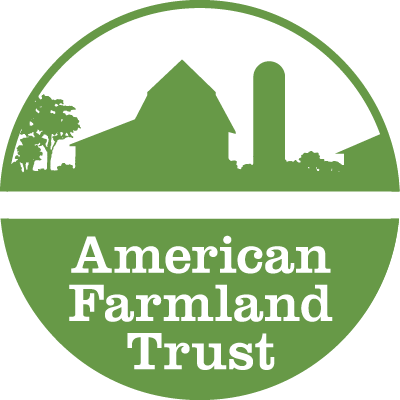The World needs agriculture to reduce emissions to avoid the worst effects of climate change, farmers need carbon market programs to work for farming.
American Farmland Trust and Sierra View Solutions released Agricultural Carbon Programs: From Chaos to Systems Change at the Soil and Water Conservation Society annual conference in Des Moines, IA. Lead authors Michelle Perez, AFT Water Initiative Director and Robert Parkhurst, President of Sierra View Solutions will present their
Over the next decade, the current agricultural system will need to fundamentally transform in order to produce enough food for 9.8 billion people, mitigate and adapt to climate change, protect water resources, and support farmers. According to the U.S. Environmental Protection Agency, agriculture is the fifth largest source of GHG emissions in the nation accounting for 9.4% of the nation’s emissions. According to World Resources Institute, GHG emissions from agriculture must be reduced by more than 75% compared to projected 2050 levels to prevent global emissions from increasing by more than 1.5°C above pre-industrial temperatures. Leading scientists have determined that improved cropland and grassland management practices have the potential to store more than 250 MtCO2e annually in the U.S. alone; equal to about 4% of total annual U.S. GHG emissions.
Carbon market programs could be key to emission reductions, but agricultural carbon reductions from these programs currently represent just 1% of the global carbon market according to the Voluntary Registry Offsets Database developed by the Berkeley Carbon Trading Project. Farmer participation is low in the 22 U.S. agricultural carbon programs created over the last 28 years (more than half created in just the last 5 years) — despite intense marketing and communications
The challenge was underscored by USDA Secretary Tom Vilsack at the Agri-Pulse Communications annual Ag & Food Policy Summit in March 2021 when he stated that the “carbon market is not designed and set up for farmers.”
“Among the many reasons why farmers are not enrolling in ag carbon programs, one of the most obvious reasons is that the payments being offered are too low. The highest paying carbon programs and pilots have paid producers up to $30 per acre for implementing no-till and cover crops which is far less than the $50 per acre that federal and state conservation financial assistance programs pay,” said Parkhurst.
Farmers also do not flock to participate because the ag carbon programs do not adequately define what a “new practice” is, and they are setting arbitrary caps on participation in areas where adoption of no-till or cover crops reaches what they call a “common practice baseline.” A third problem area is that carbon programs originally designed for forestry projects are being applied to farmers creating unrealistic requirements to sequester carbon for 40 to 100 years. Finally, the enrollment data requirements can be quite difficult for the 79 percent of farmers who use non-structured data management systems and/or have poor rural internet access.
The paper offers an in-depth analysis of the above challenges and more issues which are organized into the four critical barriers we think are preventing widespread farmer participation:
- the economics of the programs
- concerns about additionality (whether a practice is new to the farmer or already in place)
- requirements for permanence (the permanence standard, i.e., length of time, also ways to handle unintentional and intentional reversals)
- data and technology barriers for agriculture
“In our analysis, we focus on cropland and grasslands practices because they have the smallest adoption rate. If implemented, we hope the recommendations in this paper lead to systemic change that will transform agriculture from a source of greenhouse gas emissions to a sink,” said Parkhurst.
Below are recommendations to address each of the four barriers to producer participation in agricultural carbon programs. The following changes would serve to attract and retain producers in agricultural carbon programs.
Economics
- Support policies that increase the price of carbon
- Create data standards for agricultural carbon programs and associated data
- Design and implement insetting programs that eliminate free riding and double counting
- Pay early adopters to provide peer-to-peer training
Additionality Concerns
- Improve definitions of “new” practices
- Adopt crediting practices that account for the variability in agriculture
- Eliminate common practice ceilings
- Create additional opportunities to reward early adopters
Performance Requirements
- Include buffers for intentional reversals in agricultural carbon programs
Data and Technology Barriers for Agriculture
- Expand producers’ broadband access
- Modernize USDA data collection and management systems and create a national model calibration dataset
- Adopt national agricultural data policies
“If implemented, we hope the recommended changes will provide the public and producers with the assurance that the emerging agricultural carbon programs are a credible and cost-effective approach to climate mitigation and adaptation,” said Perez. “Agricultural practices (cover crops, low-till and no-till, and nutrient management) that are the primary focus of the newly emerging ag carbon programs have the potential to not only reduce GHG emissions and sequester carbon in the soil but also increase food production resilience to more extreme weather events by increasing soil health and reducing water, soil, and fertilizer runoff. We hope our analysis will help farm trade associations, environmental groups, carbon program developers, and policymakers better understand some of the specific barriers to enrollment that agriculture faces and embrace changes that could lead to widespread adoption of farm conservation practices.”
About American Farmland Trust

American Farmland Trust is the only national organization that takes a holistic approach to agriculture, focusing on the land itself, the agricultural practices used on that land, and the farmers and ranchers who do the work. AFT launched the conservation agriculture movement and continues to raise public awareness through our No Farms, No Food message. Since our founding in 1980, AFT has helped permanently protect over 6.8 million acres of agricultural lands, advanced environmentally-sound farming practices on millions of additional acres and supported thousands of farm families.
About Sierra View Solutions

Sierra View Solutions works at the intersection of agriculture, environmental markets, and policy. Our team has been involved in the development of more than 10 agriculture offset protocols and we work collaboratively with companies and organizations to implement climate-smart agriculture policies and programs. To help producers generate revenue through environmental markets, we research and advocate for practices that reduce methane emissions from dairy farms and the cultivation of rice; reduce nitrous oxide emissions from crops including corn, almonds, tomatoes, and wine grapes; and promote practices that sequesters carbon in the soil.



